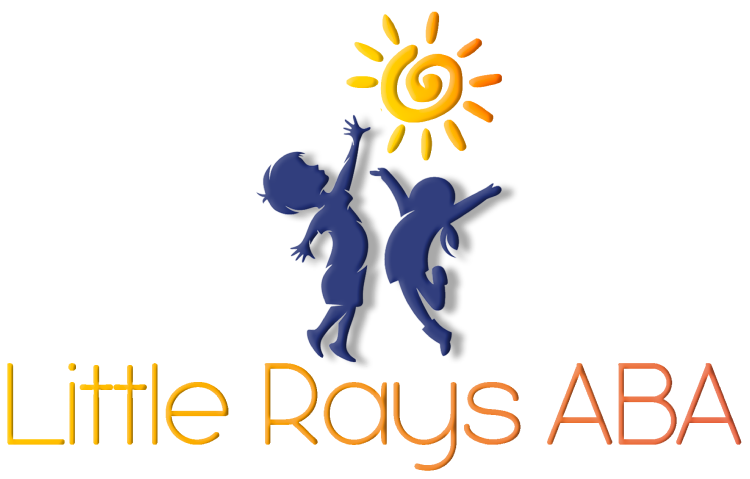
What is an ABA Therapist? Understanding Their Role in Autism Therapy
ABA therapy (Applied Behavior Analysis) is a powerful and effective method for helping individuals with autism and other developmental disorders build essential life skills. But behind every successful ABA program is a dedicated professional—the ABA therapist.
If you're wondering what an ABA therapist does, how they help individuals, and what makes them so essential, you're in the right place. I’ll break it down in a simple, engaging way so you can truly understand the role these professionals play in transforming lives.
What Does an ABA Therapist Do?
ABA therapists work with individuals—often children—who need support with communication, social skills, and behavioral development. They create structured learning environments tailored to each person’s unique needs, helping them develop skills that enhance their independence and quality of life.
Here’s a quick overview of their day-to-day responsibilities:
✔️
Conduct assessments to understand a person’s behavioral patterns and challenges
✔️
Create individualized treatment plans to target specific skills and behaviors
✔️
Implement therapy sessions that focus on learning through positive reinforcement
✔️
Teach essential life skills, including communication, social interactions, and self-care
✔️
Monitor progress by tracking data and adjusting interventions as needed
✔️
Collaborate with families and professionals to provide well-rounded support
Essentially, an ABA therapist bridges the gap between challenges and progress, ensuring that individuals receive the personalized guidance they need to thrive.
The Importance of Individualized Treatment Plans
One of the biggest strengths of ABA therapy is that no two treatment plans are exactly alike. Every child (or adult) undergoing ABA therapy has unique needs, strengths, and challenges, which is why ABA therapists take a personalized approach to treatment.
How Do ABA Therapists Create Treatment Plans?
This individualized strategy ensures that each person receives support that works best for them.
A Day in the Life of an ABA Therapist
ABA therapists work in a variety of settings, including homes, schools, clinics, and community centers. Their workday is structured around therapy sessions, data collection, and ongoing collaboration with families and professionals.
One-on-One Therapy Sessions
Most ABA therapy takes place in one-on-one sessions, allowing the therapist to focus entirely on the child’s needs. These sessions:
✔️ Are
structured and goal-oriented, focusing on specific behaviors and skills
✔️ Use
positive reinforcement to encourage desired behaviors
✔️ Help individuals
develop independence and confidence
Group Therapy for Social Skills
Some therapy sessions occur in group settings, where individuals practice:
✔️
Social interactions, such as turn-taking and sharing
✔️
Conversational skills, including how to start and maintain a conversation
✔️
Emotional regulation, learning how to manage frustration, excitement, or anxiety
By blending one-on-one and group therapy, ABA therapists create well-rounded learning experiences.
Essential ABA Therapy Techniques
ABA therapists rely on several key evidence-based techniques to help individuals learn and grow. Some of the most common include:
1️⃣ Discrete Trial Training (DTT)
✔️ Breaks skills down into
small, teachable steps
✔️ Uses
repetition and reinforcement to encourage learning
✔️ Helps individuals build new skills at their own pace
2️⃣ Pivotal Response Training (PRT)
✔️ Focuses on improving
motivation and engagement
✔️ Encourages
natural learning through play and interaction
✔️ Helps individuals learn to
initiate communication
3️⃣ Positive Behavior Support (PBS)
✔️ Uses
proactive strategies to reduce problem behaviors
✔️ Focuses on
preventing challenges rather than just reacting to them
✔️ Encourages
independence and self-regulation
Each ABA program is tailored to the individual, ensuring that therapy is both effective and meaningful.
Monitoring Progress and Making Adjustments
One of the reasons ABA therapy is so effective is because it’s data-driven. ABA therapists track progress meticulously, making adjustments as needed to ensure continued growth.
Regular Evaluations
ABA therapists don’t just assume progress is happening—they measure it. Regular evaluations allow them to:
✔️
See what’s working and keep building on those successes
✔️
Identify challenges and adjust strategies when needed
✔️
Provide families with clear updates on their child’s growth
Communicating with Families
Parents and caregivers play a huge role in ABA therapy. ABA therapists make sure to:
✔️ Keep families informed about
progress and next steps
✔️ Offer
strategies that parents can use at home to reinforce learning
✔️ Work as a team to
ensure consistency between therapy and daily life
This collaborative approach leads to faster progress and long-term success.
Working with a Team: The Role of Collaboration
ABA therapists don’t work in isolation—they are part of a larger team of professionals who work together to provide comprehensive care. This may include:
Psychologists – Provide additional insights into emotional and cognitive development
Speech Therapists – Help individuals improve communication and language skills
Occupational Therapists – Support sensory processing, fine motor skills, and daily living tasks
Educators – Ensure that ABA strategies are integrated into school settings
By working together, these professionals maximize progress and ensure well-rounded support for the individual receiving therapy.
Conclusion
ABA therapists are more than just behavior specialists—they are lifelong teachers, mentors, and advocates for individuals with autism and developmental disorders. They help build essential skills, boost confidence, and create meaningful change in the lives of those they support.
At Little Rays ABA, we believe every child deserves compassionate, expert guidance. Our ABA therapists are dedicated to helping children develop essential skills, gain confidence, and thrive. If you’re looking for experienced professionals who truly care, reach out to us today. Let’s work together to support your child’s growth! Contact us now to get started.
FAQs
What does an ABA therapist do?
An ABA therapist helps individuals with autism and developmental disorders build essential life skills, improve communication, and develop positive behaviors using evidence-based strategies.
How is progress tracked in ABA therapy?
ABA therapy is data-driven, meaning therapists collect data, measure progress, and adjust treatment plans based on individual needs.
Do ABA therapists only work with children?
No. ABA therapy is beneficial for individuals of all ages who need behavioral support, including teens and adults.
Sources:
- https://online.regiscollege.edu/online-masters-degrees/master-science-applied-behavior-analysis/resources/how-to-become-an-applied-behavior-analyst-aba-therapist/
- https://online.regiscollege.edu/blog/where-do-therapists-work/
- https://www.umassglobal.edu/news-and-events/blog/what-does-a-behavior-analyst-do
- https://post.edu/blog/how-to-become-an-aba-therapist/
- https://www.appliedbehavioranalysisedu.org/how-to-become-aba-therapist/
Related Posts





